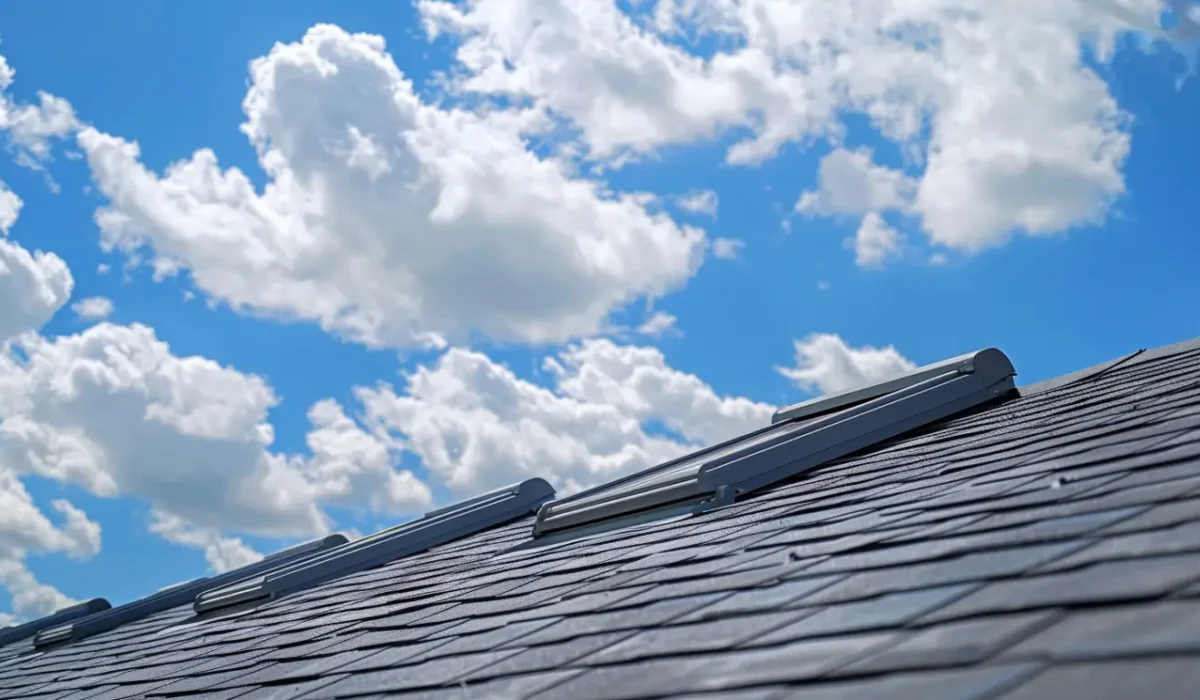It’s not unusual for homeowners to hear noises coming from their roof, but these sounds can sometimes be alarming. From popping and creaking to tapping or dripping, roof noises often signal specific issues that need attention. For homeowners in Coppell, TX, where weather extremes and seasonal changes put extra pressure on roofing systems, understanding these noises is key to protecting your home.
At KangaRoof, we help homeowners identify and address roof problems before they become costly. With certifications including OC Preferred, Emerald Premium Plus, and GAF Master Elite, we bring expertise and precision to every inspection. We proudly install and service materials from trusted brands like Malarkey, GAF, and OC, ensuring performance and durability. Guided by our mission to deliver the finest roofing craftsmanship, we remain committed to our values: doing the right thing with quality and passion.
Why Roofs Make Noise
Your roof is a complex system of materials that expand, contract, and respond to environmental conditions. Some noises are normal, while others indicate potential problems that need professional evaluation.
Common Roof Noises and Their Causes
Popping or Creaking
Often caused by thermal expansion and contraction, these sounds occur when temperatures shift dramatically between hot days and cool nights. In Coppell’s climate, this is especially common. While usually harmless, persistent or loud popping may point to loose materials or poor ventilation.
Dripping Sounds
Hearing drips inside your attic or walls during or after rain is a strong sign of a roof leak. This should be addressed immediately to prevent water damage, mold growth, or structural weakening.
Scratching or Scurrying
Scratching noises often mean animals—such as squirrels, birds, or rodents—have made their way into your attic or roofline. Left unchecked, they can chew through insulation, wiring, and even roofing materials.
Tapping or Clicking
This can occur when loose flashing, shingles, or gutters knock against the roof structure during wind. Tapping noises should be inspected quickly, as they often indicate components at risk of detaching.
Loud Cracks or Bangs
Sudden, sharp noises may be linked to structural stress or even falling tree branches. If you hear this type of sound, it’s important to check for exterior damage.
When to Worry About Roof Noises
Not all roof noises signal danger, but some warrant immediate attention:
- Dripping sounds during rainstorms
- Continuous scratching or movement noises
- Loud bangs after storms
- New or worsening noises over time
If any of these occur, contacting a certified roofing contractor is the safest course of action.
Preventing Roof Noises
- Schedule Inspections: Routine inspections identify loose components, leaks, or animal entry points.
- Maintain Ventilation: Proper attic airflow reduces expansion noises.
- Trim Nearby Trees: Prevent branches from scraping or falling on the roof.
- Seal Entry Points: Keep pests out by closing gaps in flashing, vents, or soffits.
Why Coppell, TX Homes Are Prone to Roof Noises
Coppell’s weather swings—from hot summer afternoons to chilly winter nights—cause roofing materials to expand and contract frequently. Combined with seasonal storms, these conditions make roof noises more common and sometimes more serious if not monitored.
Conclusion
While some roof noises are harmless, others signal problems that require immediate attention. By learning what common sounds mean and scheduling regular inspections, Coppell homeowners can ensure their roofs remain safe, functional, and quiet. A certified roofing professional can quickly determine whether noises are normal or signs of hidden damage.
Read also our blog: Fixing Roof Leaks Around Chimneys
